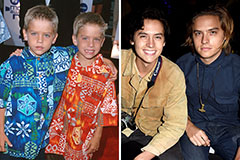Throughout the fascinating and typically unforeseeable globe of expert wrestling, championship belts hold a value that transcends plain embellishment. They are the best signs of achievement, effort, and supremacy within the squared circle. Among one of the most prestigious and historically abundant titles in the market are the WWF Champion Belts, a family tree that goes back to the really foundation of what is now referred to as copyright. These belts have not just represented the pinnacle of battling prowess yet have actually likewise developed in design and meaning along with the promo itself, becoming legendary artifacts valued by followers worldwide.
The journey of the WWF Championship started in 1963 when the World Wide Fumbling Federation (WWWF), the forerunner to the WWF and at some point copyright, was formed. Following a conflict with the National Wrestling Partnership (NWA), Northeast promoters established their very own banner and identified Friend Rogers as their inaugural WWWF Entire world Heavyweight Champion on April 25, 1963. Interestingly, some accounts recommend that Rogers was awarded the WWWF title belt, which was an old USA title he currently possessed, as a placeholder up until a brand-new design could be produced.
Throughout the WWWF period (1963-1979), the championship belt went through numerous iterations, often coinciding with the tenures of its most noticeable owners. Bruno Sammartino, the fabulous "Living Tale," held the title for an astonishing consolidated overall of over 4,000 days across 2 regimes. During his time, numerous styles were seen, consisting of one shaped like the adjoining USA, highlighting the regional roots of the promotion. Later on, a more traditional design including 2 wrestlers grappling over an eagle became associated with Sammartino's 2nd power and the champions who followed him, such as " Super Star" Billy Graham and Bob Backlund.
The year 1979 marked a substantial change as the WWWF officially ended up being the Entire world Wrestling Federation (WWF). This rebranding would ultimately cause modifications in the championship's name and look. In the early 1980s, as the WWF started its ascent in the direction of ending up being a worldwide sensation, a bigger, eco-friendly natural leather belt with gigantic gold plates was presented. This layout featured a wrestler holding a championship with the globe behind him, emphatically declaring the holder as the " Whole world Champ." Especially, the side plates of this variation listed the lineage of previous champions, a tradition that acknowledged the title's rich history. This famous belt was held by figures like Bob Backlund, The Iron Sheik, and, most notoriously, Hulk Hogan, that brought it throughout the "Hulkamania" period, a period of extraordinary mainstream success for the WWF.
The mid to late 1980s saw the introduction of what several think about among the most beloved styles in battling background: the "Winged Eagle" champion. Debuting in very early 1988, with wwf belts Hulk Hogan as the initial owner, this layout included a stunning eagle with outstretched wings as the focal point, flanked by smaller side plates. The "Winged Eagle" belt ended up being a sign of excellence throughout the late 1980s "Rock 'n' Fumbling" era and well right into the 1990s "New Generation" period. Famous champions such as Randy Savage, The Ultimate Warrior, Bret " Gunman" Hart, and Shawn Michaels all happily held this version of the title. The "Winged Eagle" also transitioned into the early years of the " Mindset Period," with " Rock Cold" Steve Austin being the last full-time champion to wear it.
The "Attitude Age," which took off in appeal in the late 1990s, brought with it a extra hostile and edgy visual, shown in the WWF Championship design. In late 1998, the " Large Eagle" belt was presented. This style included a larger main plate with a noticeable WWF "scratch" logo design, representing the company's modern identity. While keeping a sense of status, the " Huge Eagle" layout lined up with the defiant spirit of the period and was held by famous figures like "Stone Cold" Steve Austin, The Rock, and Mick Foley.
As the calendar turned to the new millennium, the WWF went through one more makeover, becoming Globe Wrestling Home entertainment (copyright) in 2002. This era also saw the marriage of the WWF Championship with the copyright Champion ( obtained after copyright's acquisition of Entire world Champion Wrestling). The " Indisputable" champion was represented by both the " Huge Eagle" and the copyright's "Big Gold Belt" being held all at once. This unification was brief, as the re-established copyright divided its roster into two brand names, Raw and copyright, resulting in the development of a new Globe Heavyweight Championship for the Raw brand name, while the original title became exclusive to copyright and was relabelled the copyright Championship.
Ever since, the copyright Championship has continued to develop in name and layout. In the mid-2000s, John Cena introduced the "Spinner" belt, a controversial however undoubtedly attention-grabbing style featuring a large copyright logo design that might spin. This reflected Cena's personality and appeal to a more youthful target market. Subsequent layouts have intended to blend modern-day aesthetic appeals with a feeling of history and prestige.
Recently, specifically considering that April 2022, the copyright Champion has actually been defended together with the copyright Universal Championship as the Undeniable copyright Universal Champion, though both titles kept their private family trees. Initially represented by both belts, a single, unified design eventually emerged, adorned with black rubies and the holder's custom-made side plates. As of April 13, 2025, Cody Rhodes holds the Indisputable copyright Championship, having actually combined it after beating Roman Reigns at copyright XL in 2024. Following his success, copyright formally relabelled the linked title to the Undisputed copyright Championship.
The WWF Championship Belts, throughout their various versions, have worked as more than simply rewards. They represent legacies, periods, and the plenty of stories informed within the wrestling ring. Each style is fundamentally connected to the champions that held them and the durations they defined. From the traditional splendour of the "Winged Eagle" to the vibrant statement of the " Rewriter" and the existing unified design, these belts are concrete items of battling background, promptly identifiable signs of success in the world of expert wrestling. Their evolution mirrors the evolution of the business itself, frequently adapting to the times while for life recognizing the rich practice upon which they were developed.
 Devin Ratray Then & Now!
Devin Ratray Then & Now! Dylan and Cole Sprouse Then & Now!
Dylan and Cole Sprouse Then & Now! Burke Ramsey Then & Now!
Burke Ramsey Then & Now! Tina Majorino Then & Now!
Tina Majorino Then & Now! Katey Sagal Then & Now!
Katey Sagal Then & Now!